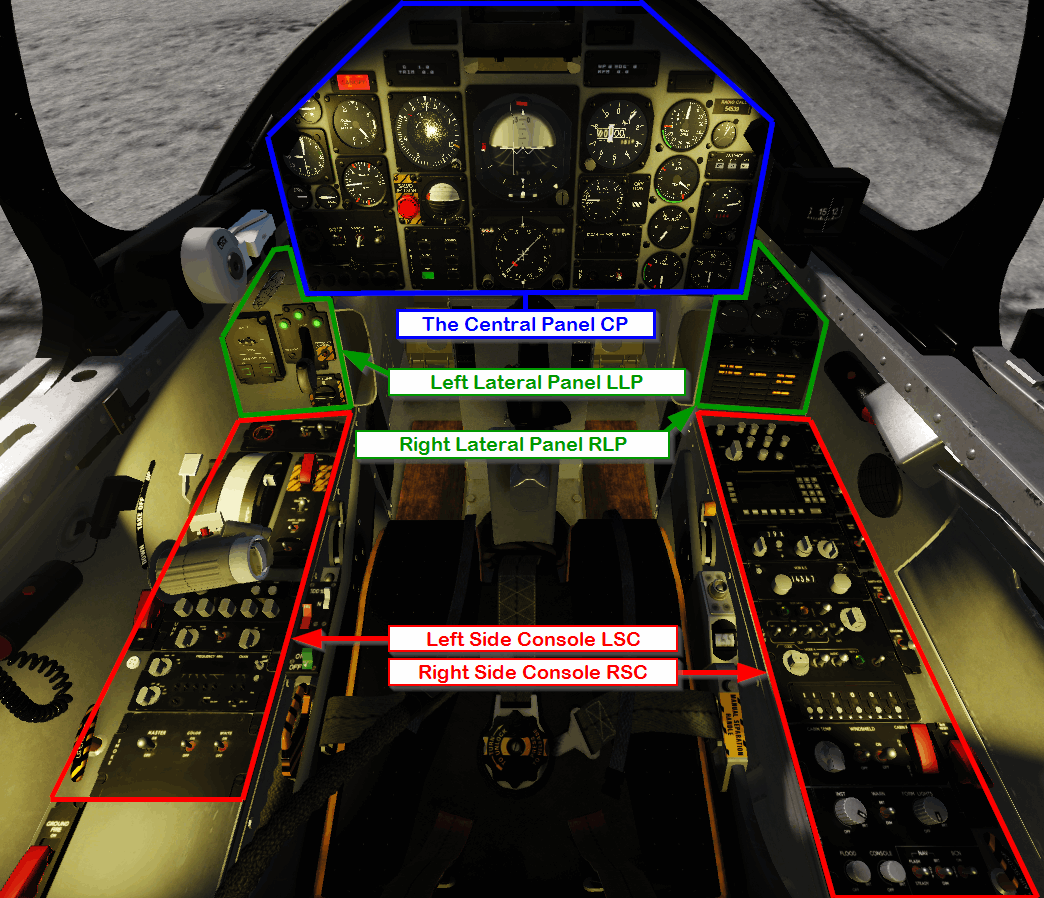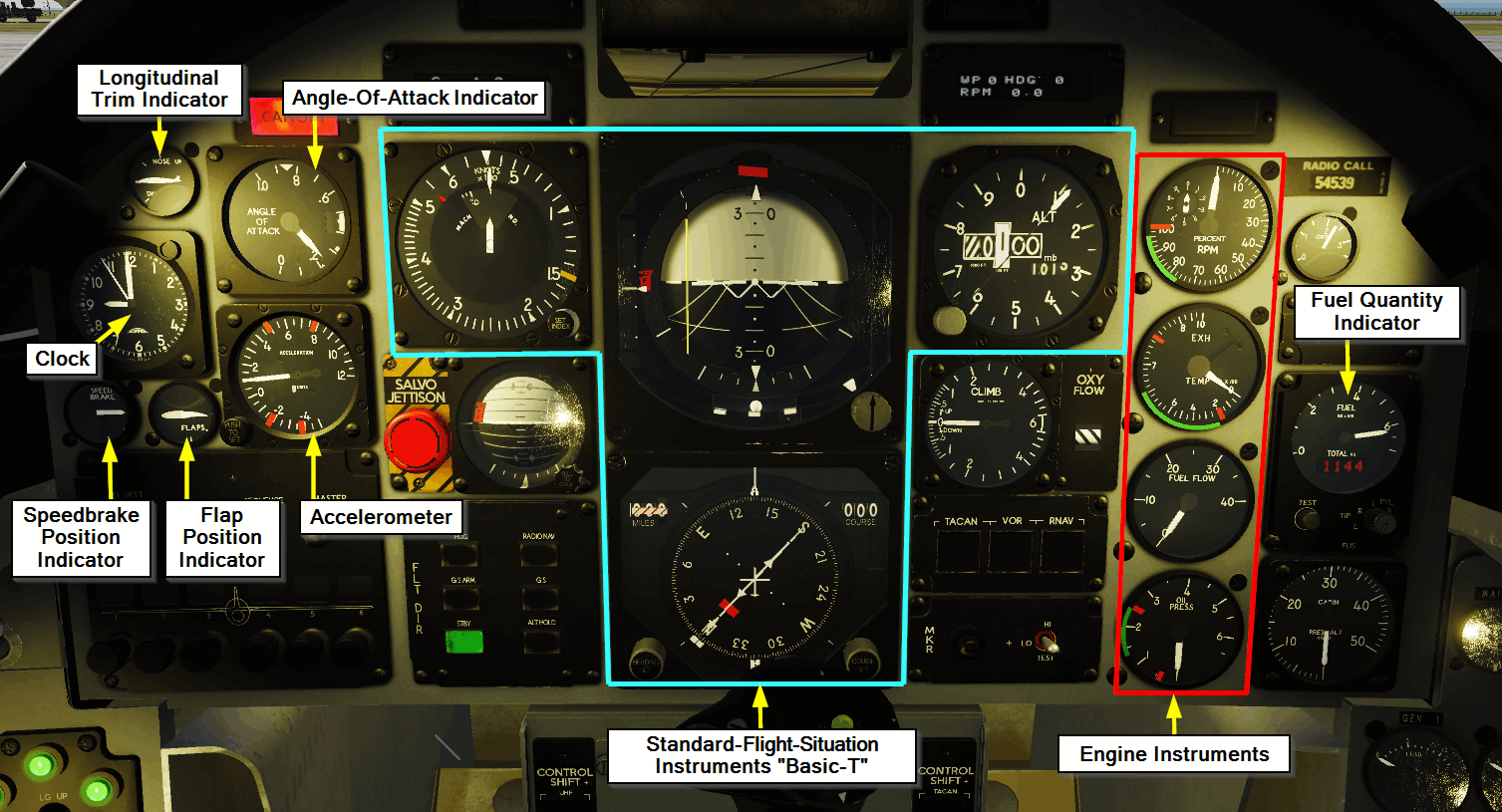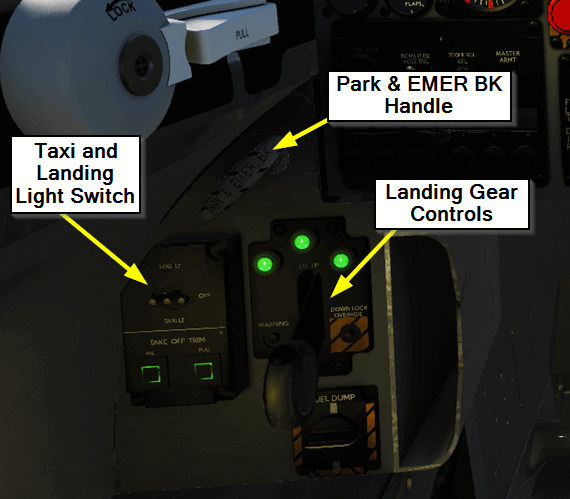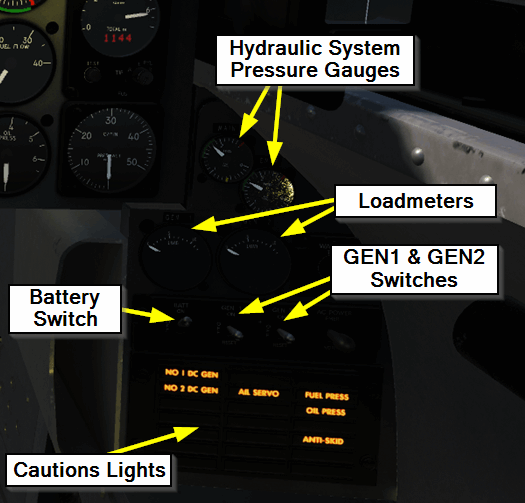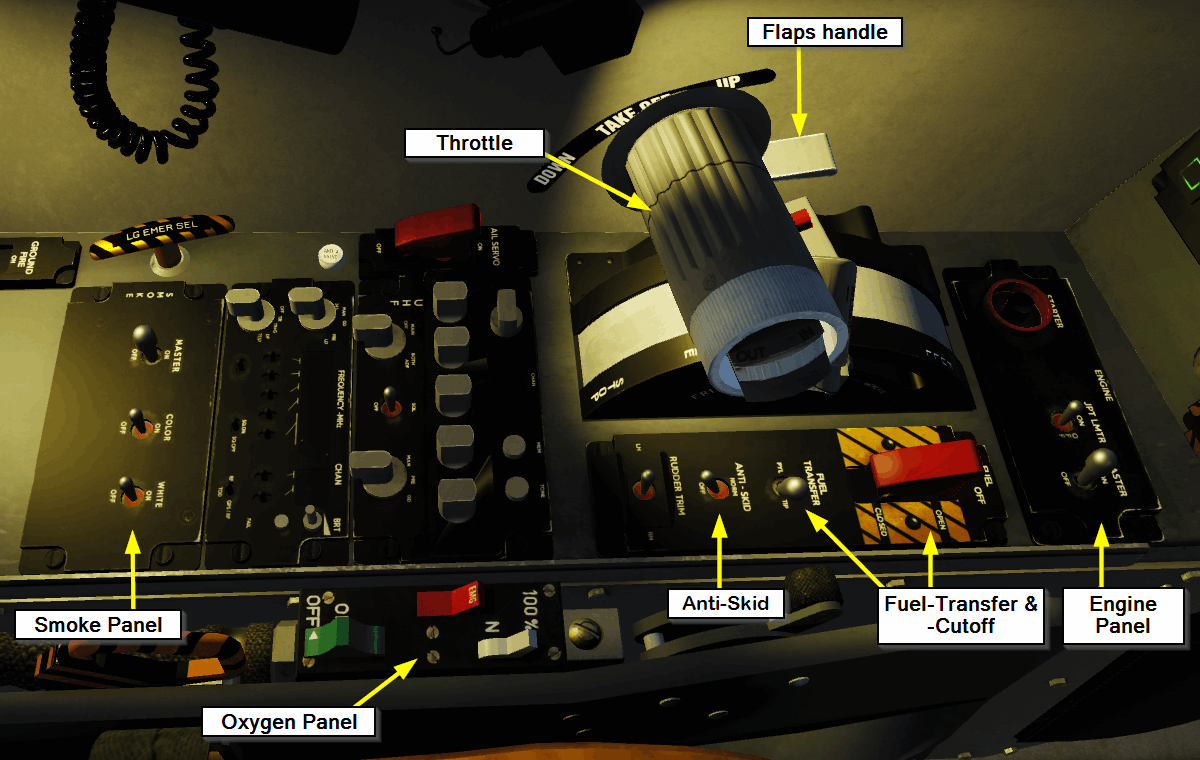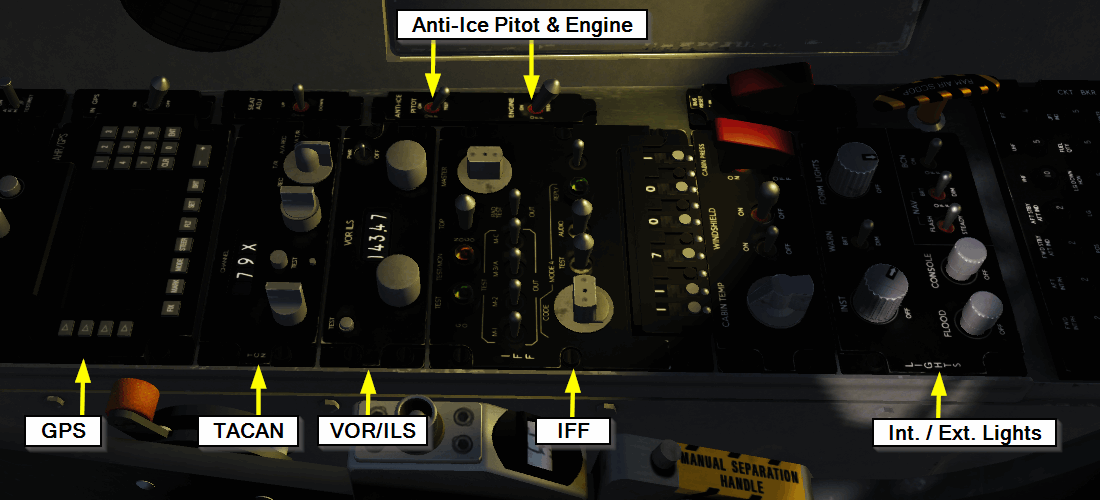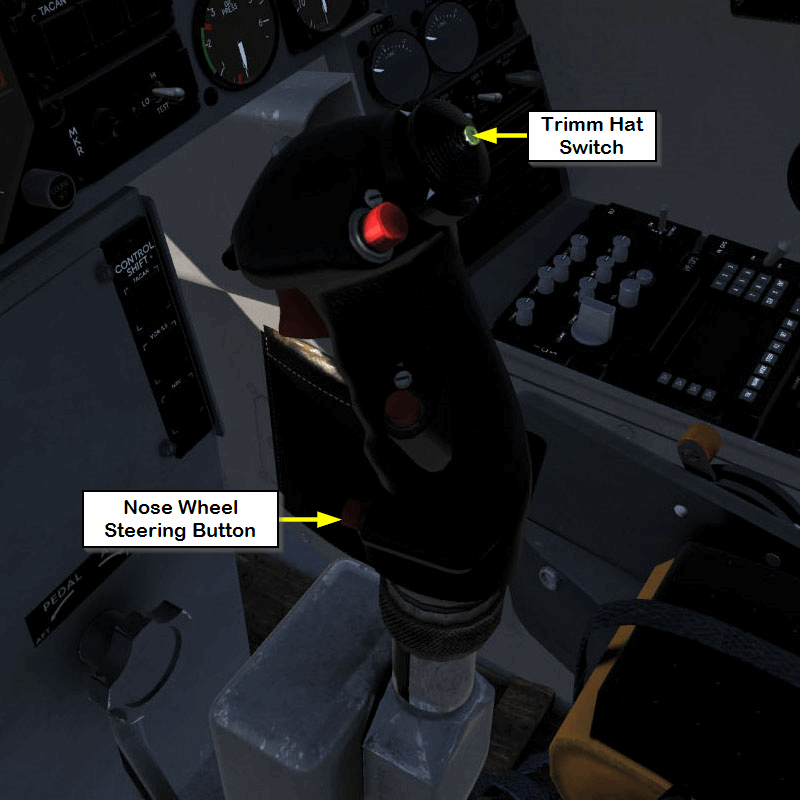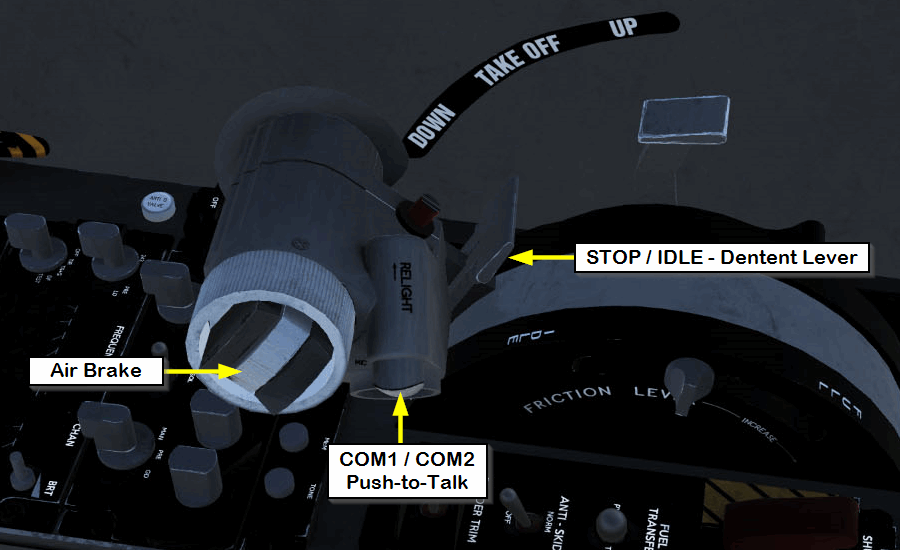Cockpit Overview
| Site: | Open Flight School |
| Course: | MB-339 Aermacchi Basic Course (DCS) |
| Book: | Cockpit Overview |
| Printed by: | Guest user |
| Date: | Wednesday, 17 December 2025, 5:41 PM |
1. Division into Subareas
The cockpit can be roughly divided into five areas. The sixth element is Stick and Throttle (HOTAS). These areas are described in more detail on the following pages:
- The Central Panel CP
- Left Lateral Panel LLP
- Right Lateral Panel RLP
- Left Side Console LSC
- Right Side Console RSC
- HOTAS (Hands On Throttle And Stick) + J = Control stick or S = Thrust lever
2. Central Panel (CP)
Directly in front of the pilot is the Central Panel CP with the main instruments. It is dominated by the standard flight attitude instruments, the so-called Basic-T. This includes:
- Artificial Horizon, centrally
- Airspeed Indicator, to left
- Barometric Altimeter, to right
- Compass Gyro, below
On the left side of the Central Panel are the displays for:
- Trim
- Air Brake
- Flaps
- Angle of Attack
- Rate of Climb and Descent Indicator
On the right side of the Central Panel you will find:
- Engine monitoring instruments
- Fuel Gauge.
The other displays and control elements, e.g. for navigation or the weapon panel, are not relevant for this Basic Course and will therefore only be discussed in subsequent courses.
5. Left Side Console (LSC)
The Left Side Console LSC is dominated by the Throttle Lever. Directly outboard is the Flap Selector. On the left side of the cockpit are the:
- Smoke system Control Panel (for air shows)
- Oxygen Panel
- Anti-skid Switches
- Fuel Transfer and Fuel Cutoff
- Engine Control Panel with:
- Engine Master
- JPT Limiter
- Starter Switch.
7. Control System (HOTAS)
The controls consist of the pedals for the rudder and the joystick and throttle HOTAS system.
HOTAS is the abbreviation for Hands On Throttle And Stick and describes a control concept for modern combat aircraft. The pilot should be able to perform as many actions as possible without having to take his hands off the joystick or throttle. This allows the pilot to maintain direct control the aircraft at all times. This is made possible by additional knobs, switches, four-way coolie hats etc. on the joystick and throttle.
The Joystick (Abbr. J) controls the Elevator and Aileron. With the Thrust Lever (Abbr. T) controlling the thrust of the engine. If the throttle is released by the finger catch and pushed forward, the engines are ignited.
Required Switches and Push-buttons
For the Basic Course we only need a few of the buttons and switches associated with the HOTAS. These and their positions are shown in the pictures below.
